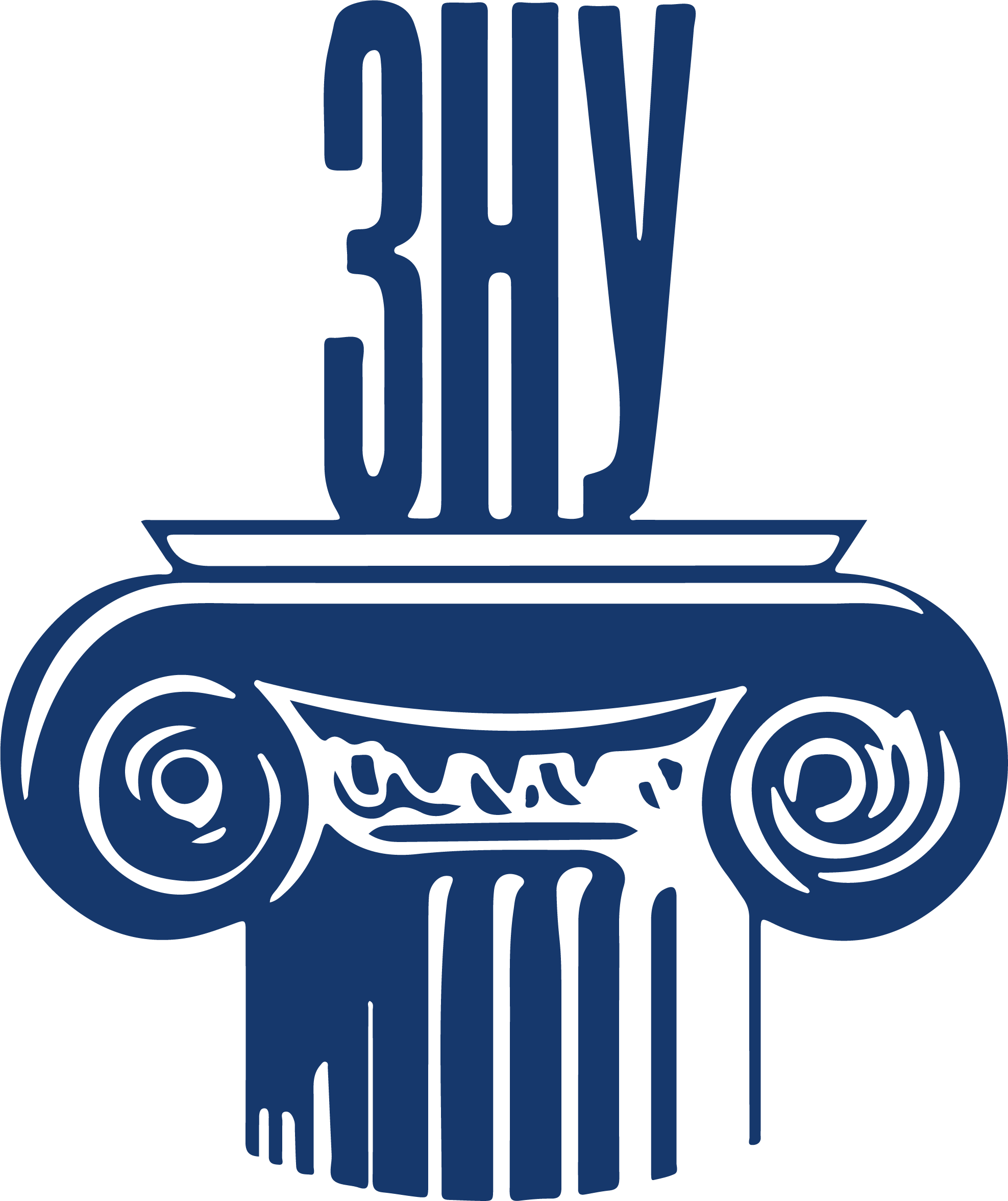ОГЛЯД МЕТОДІВ ГЕНЕРАЦІЇ ДИСКРЕТНИХ МОДЕЛЕЙ ГЕОМЕТРИЧНИХ ОБ’ЄКТІВ
Анотація
У статті проведено огляд актуальних методів побудови структурованих і блочно-структурованих дискретних моделей геометричних об’єктів. Наведено визначення дискретної моделі (сітки) геометричного об’єкта, її типів та різновидів. Описано загальну послідовність кроків, необхідних для генерації структурованих дискретних моделей геометричних об’єктів, рівняння і теорії, на основі яких будуються сітки, спеціальні програмні засоби для генерації сіток. Наведено визначення та канонічні форми еліптичного, параболічного та гіперболічного типів диференціальних рівнянь у частинних похідних другого порядку. Описано алгебраїчні, еліптичні та гіперболічні методи побудови структурованих сіток, розглянуто чисельні методи на прикладі методу скінченних різниць. Розглянуто приклади побудови структурованої сітки аеродинамічної форми NACA0012 крила літака, що розроблені за допомогою Національного консультативного комітету з аеронавтики (NACA), для рівняння Пуассона з різними значеннями параметрів. Визначено переваги і недоліки структурованих сіток. Наведено широке коло практичного застосування методів генерації дискретних моделей.
Посилання
2. Васильева М. В., Васильев В. И., Красников А. А., Никифоров Д. Я. Численное моделирование течения однофазной жидкости в трещиноватых пористых средах. Ученые записки Казанского университета. Серия: Физико-математические науки. 2017. Т. 159, Кн. 1. С. 100–115. 3. Левандовский А. Н., Мельников Б. Е., Шамкин А. А. Моделирование пористого материала методом конечных элементов. Строительство уникальных зданий и сооружений. 2017. № 2(53). С. 61–77.
4. Литвинова Ю. С., Максименко-Шейко К. В., Шейко Т. И. Аналитическая идентификация трехмерных геометрических объектов по информации о форме их сечений. Проблемы машиностроения. 2017. Т. 20, № 1. С. 45–51.
5. Лісняк А. О., Чопоров С. В., Гоменюк С. І. Методика візуалізації геометричних об’єктів, описаних за допомогою R-функцій. Вісник Запорізького національного університету: зб. наук. статей. Фізико-математичні науки. 2010. № 1. С. 88–97.
6. Нуриев А. Н., Юнусова А. И., Зайцева О. Н. Моделирование перемещения клиновидного виброробота в вязкой жидкости при различных законах движения внутренней массы в пакете OpenFOAM. Труды ИСП РАН. 2017. Т. 29, Вып. 1. С. 101–118.
7. Чопоров С. В., Лісняк А. О., Борисовська Ю. О., Козлова О. С., Снєжкова Л. С. Методи побудови дискретних моделей: неструктуровані сітки. Вісник Запорізького національного університету: зб. наук. статей. Фізико-математичні науки. 2016. № 2. С. 237–250.
8. Яцук Ю. В. Построение расчетных сеток для решения уравнений математической физики методом «объемов Безье». Вестник Астраханского государственного технического университета. Серия: Морская техника и технология. 2009. № 1. С. 116–120.
9. Aanjaneya M., Gao M., Liu H., Batty C., Sifakis E. Power Diagrams and Sparse Paged Grids for High Resolution Adaptive Liquids. ACM transactions on graphics. 2017. Vol. 36, No 4. DOI: 10,1145/3072959.3073625.
10. AbdelMigid T. A., Saqr K. M., Kotb M. A., Aboelfarag A. A. Revisiting the lid-driven cavity flow problem: Review and new steady state benchmarking results using GPU accelerated code. Alexandria engineering journal. 2017. Vol. 56, No 1. P. 123–135.
11. Badreddine H., Sato Y., Berger M. et al. A Three-Dimensional, Immersed Boundary, Finite Volume Method for the Simulation of Incompressible Heat Transfer Flows around Complex Geometries. International journal of chemical engineering. 2017. DOI: 10.1155/2017/1726519
12. Bianchi G., Rane S., Kovacevic A., Cipollone R. Deforming grid generation for numerical simulations of fluid dynamics in sliding vane rotary machines. Advances in engineering software. 2017. Vol. 112. P. 180–191.
13. Bianchi G., Rane S., Kovacevic A., Cipollone R., Murgia S., Contaldi G. Grid generation methodology and CFD simulations in sliding vane compressors and expanders. IOP Conference Series-Materials Science and Engineering. 2017. Vol. 232. DOI: 10.1088/1757-899X/232/1/012053.
14. Bonazzoli M., Rapetti F., Venturini C. Dispersion analysis of triangle-based Whitney element methods for electromagnetic wave propagation. Applied mathematics and computation. 2018. Vol. 319. P. 274–286. 15. Chen L., Lingen E. J., de Borst R. Adaptive hierarchical refinement of NURBS in cohesive fracture analysis. Numerical Methods in Engineering. 2017. Vol. 112, No 13. P. 2151–2173.
16. Dolgov S. V, Kazeev V. A., Khoromskij B. N. Direct tensor-product solution of one-dimensional elliptic equations with parameter-dependent coefficients. Mathematics and computers in simulation. 2018. Vol. 145. P. 136–155.
17. Dostart N., Liu Y., Popovic M. A. Acoustic Waveguide Eigenmode Solver Based on a Staggered-Grid Finite-Difference Method. Scientific reports. 2017. Vol. 7. DOI: 10.1038/s41598-017-17511-x. 18. Falkenstein T., Kang S., Davidovic M., Bode M., Pitsch H., Kamatsuchi T., Nagao J., Arima T. LES of Internal Combustion Engine Flows Using Cartesian Overset Grids. Oil & Gas Science and Technology – Rev. IFP Energies nouvelles. 2017. Vol. 72. Nо 6. DOI: 10.2516/ogst/2017026.
19. Fort J., Furst J., Halama, J. Numerical simulation of flow through cascade in wind tunnel test section and stand-alone configurations. Applied mathematics and computation. 2018. Vol. 319. P. 633–646.
20. Gasii G. M. Structural and Design Specifics of Space Grid Systems Science & technique. 2017. Vol. 16, No 6. P. 475–484.
21. Huang C., Liu W., Yang G. Numerical studies of static aeroelastic effects on grid fin aerodynamic performances. Chinese journal of aeronautics. 2017. Vol. 30, No 4. P. 1300–1314.
22. Koblitz A. R., Lovett S., Nikiforakis N. Direct numerical simulation of particulate flows with an overset grid method. Journal of computational physics. 2017. Vol. 343. P. 414–431.
23. Li H., Liu T., Wang M., Zhao D., Qiao A., Wang X., Gu J., Li Z., Zhu B. Design optimization of stent and its dilatation balloon using kriging surrogate model. Biomedical engineering online. 2017. Vol. 16. DOI: 10.1186/s12938-016-0307-6.
24. Liu DW, Xu X., Li Q., Peng X., Chen DH. Correction of model deformation effects for a supercritical wing in transonic wind tunnel. Tehnicki Vjesnik-Technical Gazette. 2017. Vol. 24, No 6. P. 1647–1655.
25. Liu W., Li N., Zhao J., Su Y. Wake structure and hydrodynamic performance of flapping foils mimicking fish fin kinematics. Saudi journal of biological sciences. 2017. Vol. 24, No 6. P. 1344–1354.
26. Mahariq I., Erciyas A. A spectral element method for the solution of magnetostatic fields. Turkish journal of electrical engineering and computer sciences. 2017. Vol. 25, No 4. P. 2922–2932.
27. Mahmood M. S., Laghrouche O., Trevelyan J. Implementation and computational aspects of a 3D elastic wave modelling by PUFEM. Applied mathematical modelling. 2017. Vol. 49. P. 568–586.
28. Meena D. R., Gadre S. R., Balanarayan P. PAREMD: A parallel program for the evaluation of momentum space properties of atoms and molecules. Computer physics communications. 2018. Vol. 224. P. 299–310. 29. Meyghani B., Awang M. B., Emamian S. S., Mohd Nor M. K. B., Pedapati S. R. A Comparison of Different Finite Element Methods in the Thermal Analysis of Friction Stir Welding (FSW). Metals. 2017. Vol. 7, No 10. DOI: 10.3390/met7100450.
30. Okhotnikov D. I. Direct Numerical Simulation of Laminar-Turbulent Transition on Grids with Local Refinement. Uchenye zapiski Kazanskogo universiteta-seriya fiziko-matematicheskie nauki. 2017. Vol. 159, No 2. P. 216–230.
31. Oliveira R. A. F., Justi G. H., Lopes G. C. Grid convergence study of a cyclone separator using different mesh structures. Chemical industry & chemical engineering quarterly. 2017. Vol. 23, No 3. P. 311–320.
32. Patel H. V., Das S., Kuipers J. A. M. A coupled Volume of Fluid and Immersed Boundary Method for simulating 3D multiphase flows with contact line dynamics in complex geometries. Chemical engineering science. 2017. Vol. 166. P. 28–41.
33. Pi Y., Wang N., Chen J., Miao M., Jin Y., Wang W. Anisotropic equivalent thermal conductivity model for efficient and accurate full-chip-scale numerical simulation of 3D stacked IC. International journal of heat and mass transfer. 2018. Vol. 120. P. 361–378.
34. Raeli A., Bergmann M., Iollo A. A finite-difference method for the variable coefficient Poisson equation on hierarchical Cartesian meshes. Journal of computational physics. 2018. Vol. 355. P. 59–77.
35. Schweiger M., Arridge S. Basis mapping methods for forward and inverse problems. International journal for numerical methods in engineering. 2017. Vol. 109, No 1. P. 3–28.
36. Shumaev V. V., Kuzenov V. V. Development of the numerical model for evaluating the temperature field and thermal stresses in structural elements of aircrafts. International conference problems of thermal physics and power engineering (PTPPE-2017) Journal of Physics Conference Series. 2017. Vol. 891. DOI: 10.1088/1742-6596/891/1/012311.
37. Takenaka H., Komatsu M., Toyokuni G., Nakamura T., Okamoto T. Quasi-Cartesian finite-difference computation of seismic wave propagation for a three-dimensional sub-global model. Earth planets and space. 2017. Vol. 69. DOI: 10.1186/s40623-017-0651-1.
38. Wang S., Zhang L., Yin G. Numerical Investigation of the FSI Characteristics in a Tubular Pump. Mathematical problems in engineering. 2017. DOI: 10.1155/2017/7897614. 39. Wang ZY, Yu JC, Zhang AQ, Wang YX, Zhao WT. Parametric geometric model and hydrodynamic shape optimization of a flying-wing structure underwater glider. China Ocean Engineering. 2017. Vol. 31, No 6. P. 709–715.
40. Xiao C. N., Denner F., van Wachem B. G. M. Fully-coupled pressure-based finite-volume framework for the simulation of fluid flows at all speeds in complex geometries. Journal of computational physics. 2017. Vol. 346 P. 91–130. 41. Yeo H., Ki H. A unified momentum equation approach for computing thermal residual stresses during melting and solidification. Computer physics communications. 2018. Vol. 224. P. 230–244.
42. Zhao P., Chan C. H., Wang G. An Improved Full-Wave Multilevel Green’s Function Interpolation Method With RBF-QR Technique for Fast Field Evaluation. IEEE ACCESS. 2017. Vol. 5. P. 10241–10249.
43. Zheng J., Zhang W., Jiang J., Guo R. CFD simulation and experimental study of water-oil displacement flow in an inclined pipe. International journal of heat and technology. 2017. Vol. 35, No 3. P. 663–667.
44. Zhou L., Bai L., Shi WD, Li W, Wang C, Ye DX. Numerical analysis and performance experiment of electric submersible pump with different diffuser vanes number. Journal of the brazilian society of mechanical sciences and engineering. 2018. Vol. 40, No 2. DOI: 10.1007/s40430-018-0986-y.
45. Чопоров С. В., Гоменюк С. І., Алатамнех Х. Х., Оспіщев К. С. Методи побудови дискретних моделей: структуровані та блочно-структуровані сітки. Вісник Запорізького національного університету: Збірник наукових статей. Фізико-математичні науки. 2016. № 1. С. 272–284.
46. Каліон В. А. Обчислювальна гідромеханіка. Модельні задачі: навч. посібник. Київ: Видавничо-поліграфічний центр «Київський університет», 2011. 175 с.
47. Thompson J. F., Soni B. K., Weatherill N. P. Handbook of Grid Generation. Boca Raton: CRC Press, 1998. 1096 p.
 ISSN
ISSN 




